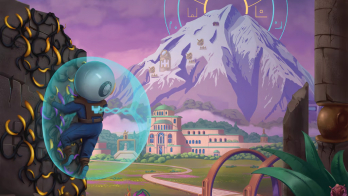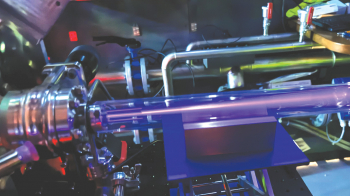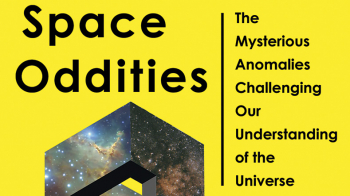Physicists turned science-education researchers Magdalena Kersting and Urban Eriksson explore the latest thinking in physics education, communication and outreach.
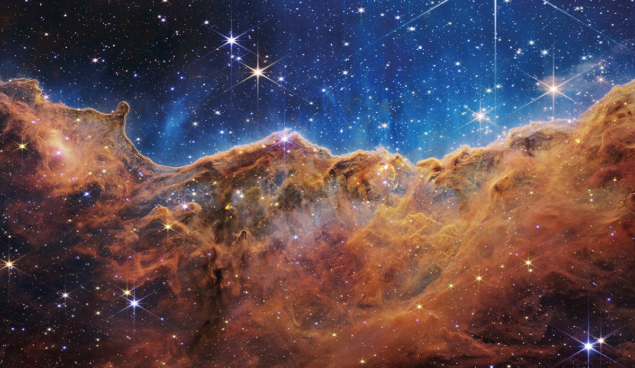
Although science education, communication and public outreach are distinct fields of research and practice, they often overlap and intertwine. Common to the three fields is their shared goal of increasing scientific literacy, improving attitudes to STEM (science, technology, engineering and mathematics) and empowering society to engage with and apply scientific knowledge in decision-making processes. In light of challenges such as climate change and rapid advances in artificial intelligence, achieving these goals has become more relevant than ever.
Science education, communication and outreach have developed from different origins, at different times, and in response to diverse public needs. The formation of science education as a proper discipline, for example, dates back to educational reform movements in the late 19th century. Science communication, on the other hand, is a relatively young field that only took a clear form in the second half of the 20th century in response to a growing awareness of the role and impact of scientific progress.
While it is true that practitioners often cross the disciplinary boundaries of these fields, education, communication and outreach today represent distinct professions, each with its own identity, methods and target groups. Whereas science educators tend to focus on individual learners, often in school settings, public-outreach professionals aim to inspire interest in and engagement with science among the general public in out-of-school settings. Besides, the differences go beyond variations in target groups and domains. After all, the distinction between education and communication is substantial: many science journalists resist the suggestion that they serve a role in education, arguing that their primary goal is to provide information.
Questions then arise: how do these disciplines overlap, diverge and interact, and how have their practices evolved over time? And how do these evolutions affect our understanding of science and its place in society? As two academics whose career trajectories have spanned science, education and communication, we have experienced intersections and interactions between these fields up close and see exciting opportunities for the future of science engagement.
Magdalena: farewell to the deficit model
What stands out to me is the parallel development that science education and communication have undergone over the past decades. Despite their different origins, traditions, ideas, models and theories, all have seen a move away from simple one-way knowledge transmission to genuine and meaningful engagement with their respective target groups, whether that’s in a classroom, a public lecture or at a science festival.
In classrooms, there has been a noticeable shift from teacher-centred to student-centred instructional practices. In the past, science teachers used to be active (talking and explaining), while students were passive (listening). Today, the focus is the students and how to engage them actively in the learning process. A popular approach to engaging students is enquiry-based science education, where students take the lead (asking questions, formulating hypotheses, running experiments and drawing conclusions) and teachers act as facilitators.
Collaboration between science education researchers and practitioners is critical to improving science education
One excellent example of such an enquiry-based approach is Mission Gravity, an immersive virtual-reality (VR) programme for lower- and upper-secondary students (see “Mission gravity” image). Developed by the education and public outreach team at OzGrav, the Australian Research Council Centre of Excellence for Gravitational Wave Discovery, the programme aims to teach stellar evolution and scientific modelling by inviting students on a virtual field trip to nearby stars. The VR environment enables students to interact with stars, make measurements and investigate stellar remnants. By collecting data, forming hypotheses and trying to figure out how stars change over time, the students discover the laws of physics instead of merely hearing about them.
The shift towards student-centric education has been accompanied by an evolution in our understanding of student learning. Early-learning theories used to lean heavily on ideas of conditioning, treating learning as a predictable process that teachers could control through repetition and reinforcement. Contemporary models consider cognitive functions, including perception, problem-solving and imagination, and recognise the crucial role of social and cultural contexts in learning science. Nowadays, we acknowledge that education is most meaningful when students take responsibility for their learning and connect the subject matter to their own lives.
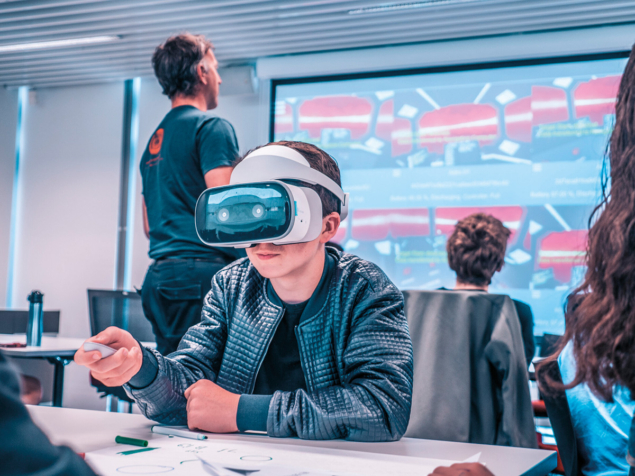
For instance, my PhD project on general-relativity education leveraged sociocultural learning theory to design an interactive learning environment, incorporating collaborative activities that encourage students to articulate and discuss physics concepts. This “talking physics” approach is great for fostering conceptual understanding in modern physics, and we refined the approach further through iterative trials with physics teachers to ensure an authentic learning experience. Again, collaboration between science education researchers and practitioners (in this case, physics teachers) is critical to improving science education.
Similarly, science communication has transitioned from deficit models to more dialogic and participatory ones. The earlier deficit models perceived society as lacking scientific understanding and envisaged a one-way flow of information from expert scientists to a passive audience – quite similar to the behaviourist approach prevalent in the early days of science education. Modern science communication practices foster a dialogue where scientists and the public engage in meaningful discussions. In particular, the participatory model positions scientists and the public as equal participants in an open conversation about science. Here, the interaction is as critical as the outcomes of the discussions. This places emphasis on the quality of communication and meaning-making, similar to what many consider the goals of good science education (see “Increasing interaction” figure).
To illustrate a participatory approach to science communication, consider the City-Lab: Galileo initiative in Zurich. This initiative integrates theatre, podcasts and direct interactions between scientists, actors and citizens to foster dynamic conversations about the role of science in society. A range of media and formats were employed to engage the public beyond traditional forms, ranging from audio-visual exhibits to experiences where the public could attend a play and then engage in a post-show discussion with scientists. By directly involving scientists and the public in such exchanges, City-Lab: Galileo invites everyone to shape a dialogue about science and society, underlining the shifting paradigms in science communication.
Urban: the power of semiotics
For me, a ground-breaking moment in how we communicate disciplinary knowledge came when I saw two astronomers in a coffee room discussing the evolution of a stellar cluster. They were using their hands to sign the so-called turn-off point in a Hertzsprung–Russell diagram in mid-air, indicating their individual perspective on the age of the cluster. These hand-wavings would most likely not mean anything to anyone outside the discipline and I was intrigued by how powerful communication using such semiotic resources can be. The conclusion is that communicating science does not just involve speech or text.
Particularly intriguing are the challenges students and others have with visualising the world in 3D and 4D from 2D input, for example in astronomical images, which I started to notice while teaching astronomy. How hard can it be to “see”, in one’s head, the 3D structure of a nebula (see “Nebulous” image) a galaxy or even the Sun–Earth–Moon system when looking at a 2D representation of it? It turns out to be very hard for most people. This led to an investigation of the ability of people to extrapolate 3D in their mind, which immediately raised another question: what do people actually “see” or discern when engaged in disciplinary communication, or when looking at the stunning images from the Hubble or Webb space telescopes? Nowadays this is referred to as disciplinary discernment in the literature.
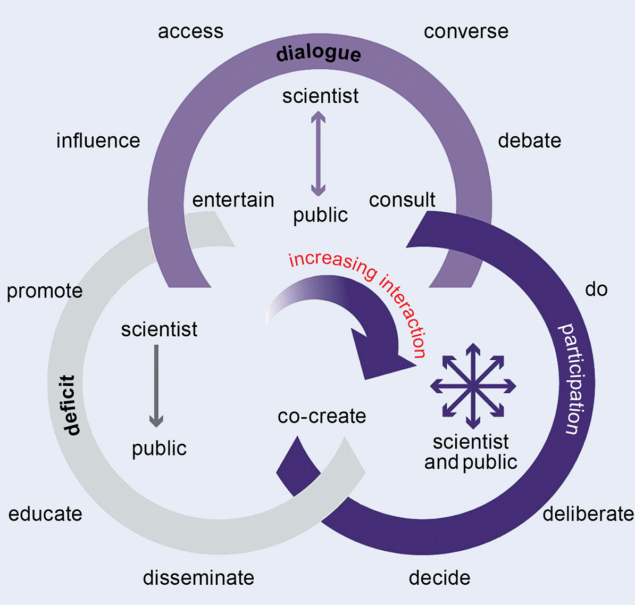
Researching such questions relies on methods that are quite different from those used in the natural sciences. Often data exists in the form of transcripts of interviews, which are then read, coded and characterised for categories of discernment. In the case of spatial perception, this inductive process led to an anatomy of multidimensional discernment describing the different ways that the participants experience three-dimensionality in particular and disciplinary discernment in general. It also identified a deeper underlying challenge that all science learning depends upon: large and small spacetime scales. Spatial and temporal scales, in particular large and small, are identified as threshold concepts in science. As a result, the success of any teaching activity in schools, science centres and other outreach activities depends on how well students come to understand these scales. With very little currently known, there is much to explore.
As an educational researcher in physics, one has to be humbled by the great diversity of ideas about what it means and entails to teach and learn physics. However, I’ve come to appreciate a particular theoretical framework based on studies of the disciplinary communication in a special group in society: physicists. This, and indeed any group with the same interests, develops and shares a special way of communicating knowledge. In addition to highly specialised language, they use a whole setup of representations, tools and activities. These are often referred to as semiotic resources and are studied in a theoretical framework called social semiotics.
Social semiotics turns out to be a powerful way to study and analyse the disciplinary communication in physics and astronomy departments. I usually describe the framework as a jigsaw puzzle that we are still building. We have identified, and described in detail, certain pieces in this theory but there are more to explore. One such piece is embodiment and what the use of gestures means for communicating disciplinary knowledge, such as the hand-waving astronomers in the coffee room. It is similar to the theory-building processes in physics, where through empirical investigations physicists try to construct a solid theory for how nature works.
Joint conclusion
Understanding how we think about and communicate physics is as interesting and challenging as physics itself. We believe that they are inseparable, and as we explore the landscape of physics to understand the universe we are also exploring the human mind and how we can understand the universe. Physicists too have to be able to communicate with and engage other physicists. The scientific process of publishing research is an excellent example of how challenging this can be: researchers must convince their colleagues around the world that what they have found is correct, or else they fail. The history of science is full of such examples. For example, in the 1920s Swedish astronomer Knut Lundmark made observations of stars in distant galaxies and found that these galaxies seem to move away from us – in essence he had discovered the expansion of the universe. However, he was unable to convince (read: communicate this to) his colleagues, and a few years later Edwin Hubble did the same thing and made a more convincing case.
Finally, this article tries to shed light on the challenges in communicating physics to not just physicists but also students, and the public. The challenges are similar but at different levels, depending on the persons involved and engaged in this interchange of knowledge. What the physicist tries to communicate and what the audience discerns and ultimately learns about the universe are often two different things.
Further reading
J Airey and U Eriksson 2019 Des. Learn. 11 99.
M Eriksson et al. 2020 Eur. J. Phys. 41 065705.
U Eriksson et al. 2014 Sci. Educ. 98 412.
U Eriksson et al. 2014 Eur. J. Sci. Math. Educ. 2 167.
U Eriksson 2019 Phys. Rev. Phys. Educ. Res. 15 010133.
M Kersting and D Blair (eds.) 2001 Teaching Einsteinian Physics in Schools (Routledge).
M Kersting et al. 2021 Int. J. Sci. Educ. 43 2044.
M Kersting et al. 2023 Int. J. Sci. Educ. Part B doi: 10.1080/21548455.2023.2238871.
T van Leeuwen (2005) Introducing Social Semiotics (Routledge).
D F Treagust et al. (Eds) 2017 Multiple Representations in Physics Education (Springer).





